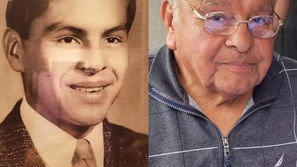Textbooks and the LGBT community
- Bill Coate
- May 22, 2019
- 4 min read

Steve Swayne/Wikimedia Commons
The Parthenon on the Athenian Acropolis is a symbol of ancient Greek Civilization, which included the philosophers Socrates, Plato, and Aristotle.
A little over seven years ago, the California State Legislature passed a bill, SB48, which Gov. Jerry Brown signed into law, requiring the California Board of Education and local school districts to adopt textbooks and other teaching materials that deal with the contributions and roles of gays and lesbians by the 2013-2014 school year. In signing the bill, Brown took a swipe at historians by suggesting that they need to write more “honest” history.
That is what really got my attention at the time. I wasn’t surprised at the passage of the legislation, but the governor’s maligning of the historiography of the subject caused me to ponder the situation, and now I am wondering how SB48 is working in Madera?
Truth be told, the historical community has done a fairly complete job of recording the history of homosexuality. This writer can cite at least 25 major works on the subject. It is the educational community that has omitted the contributions of homosexuals.
With the new law, however, that would all be corrected, or so I thought. Take the 6th grade for example. When teachers at that level composed their lesson plans on ancient Greece, they would have an abundance of material with which they could satisfy the legislation. There was a problem, however. To do so could have been offensive to the modern gay and lesbian communities.
In order to tell “honest” history, as Brown insisted, 6th grade teachers would be derelict in their duties if they didn’t point out that society in ancient Greece wholeheartedly accepted and encouraged homosexual behavior, but they did it for a reason other than sexual orientation. The men did it because they were misogynists. They didn’t like women; they thought them inferior.
According to Professor Kevin Reilly, a Ph.D. in history from Rutgers, the ancient Greek men thought that there was something just a little imperfect in loving a woman.
“The more highly they thought of love, the more foolish it seemed to waste the emotion on their inferiors,” wrote Reilly.
With this bias, it is not surprising that homosexual love was viewed by the ancient Greeks as a noble ideal, and the most ideal of that ideal love was the love of a mature man for a youth.
Now, since the new California law insisted that students learn about the contributions of homosexuals, teachers would not dare to ignore Socrates, Plato, and Aristotle.
Plato wrote that his teacher, Socrates, “always felt a flame when he looked at a handsome young man.” Plato himself taught that the love of a boy was useful in leading men to see the “higher, ideal kinds of love.”
After that, along came Aristotle, who held that “love and friendship are found most and in their best form between men.”
To be sure, connecting homosexuality to greatness will not be a problem for teachers of ancient Greek culture. What may be a bit disconcerting, however, if they really follow the law, will be the knowledge that those great Greek thinkers from so long ago actually thought that teachers were not doing their jobs if they were not sexually involved with their students.
For the ancient Greeks, especially the Spartans, the teacher was responsible for the development of his young students, and this included pederasty. Love of the student was considered a necessary element of the “teaching process.”
Plato wrote that when Socrates went looking for students, he said he was “hunting down the good-looking young fellows.”
Then, if the educators really want to make the governor and the legislators happy, they will point out to their students that ancient Greek homosexuality may have originated in the military as part of “the recruitment of the young, their training in physical combat, and the comradeship of warriors.”
Plato wrote, “A handful of lovers and loved ones, fighting shoulder to shoulder, could rout a whole army.” Homosexuality also flourished in the gymnasiums, where youths exercised and competed in the nude.
Now, lest today’s watchdogs of history get a little restless because it seems like the study of homosexuality excludes women — not to worry. The modern teacher will have many Lesbian heroines to use for illustrations. Just consider Sappho, a woman who wrote a book on the symptoms of love that was useful for physicians for hundreds of years.
In addition to her contributions to medical history, teachers can show that Sappho lived on the Greek Island of Lesbos, and “since she was sexually attracted to other women, her life is the source of our word, ‘lesbians’ today.”
To be sure, Sappho was married to a man and had a daughter; but she ran a school for girls and fell in love with one after another of her pupils.
So there it is. If “honest” history is not being taught, it is not the fault of the historians. The blame can be found at the feet of the politicians and educators. However, considering what’s out there in the history books, the folks who wrote SB48 might ought to remember they should be careful for what they ask. They might just get it.


























Comments